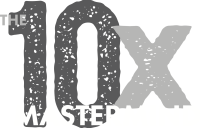Entrepreneurship is full of challenges and opportunities. Starting your own business is not an easy task. In addition to a great idea, you need perseverance, planning, and organization. Fortunately, we live in the digital age, where technology makes life easier and offers essential tools for those who are starting a business.
Whether you’ve just started your startup or already have a well-established one, you can take advantage of the following essential online tools designed to help you improve organization and productivity in your work routines.
5 Essential tools
Trello
Trello is one of the most simple and intuitive essential project management tools. It is configured as a board where you can organize projects in lists. Each list has cards with the ideas, tasks, or elements that make up your project. Imagine a cork box, in digital format, in which you place and organize virtual post-its.
In each card you can add all the relevant content to the task: add comments, upload files from your computer or services such as Google Drive, create checklists, set an expiration date, among others. You can use this software for free in your browser or download the application for mobile devices.
FreshBooks
Freshbooks is cloud accounting software designed especially for entrepreneurs and freelancers. With it, you can manage your business accounting without having to be an expert on the subject.
The purpose of this online tool is to offer a complete solution for you to keep track of business expenses and send invoices to your clients. You can create invoices, track expenses, send follow-up emails, and manage sales taxes.
Besides, financial reports can be generated, which essential to obtain information on how your business is doing and how it can grow.
The tool also allows you to automate various tasks such as organizational expenses and follow-up time in the collection process. This will allow you to spend less time on these activities and invest the surplus in serving your customers and formulating new strategies.
Evernote
Evernote lets you organize just about everything: write notes, create to-do lists, set reminders, record voice memos, and more. With a simple interface, you can annotate, save and organize all kinds of information in a database accessible through the Evernote website or from the application available for smartphones.
Notes can contain text, audio, links, checklists, videos, and files. Also, they can be synchronized with different devices, since all the annotations you make are stored in the cloud and shared with your team.
Google Analytics
If you have a website, you should use Google Analytics. This is one of the essential tools that allow you to keep track of the most important metrics on your page. You can control the number of visitors that came to your site, how they did it, and how these users navigate through it.
The information you get with this tool is invaluable and also 100% free. With this service, it is possible to analyze the entire flow of visitors to your website, and in this way, discover which actions of your Digital Marketing strategy are working and which are not.
The tool is capable of identifying visitor data such as geographical location, type of screen, operating system, and browser used. Additionally, you can see how the visitor got to the page, if they made any conversions, how long the visit lasted, among many other data. All this can be analyzed in specific periods (daily, weekly, monthly, and yearly).
Canva
Canva is the ideal tool to create magnificent images in a few seconds and without the need for technical knowledge. Its interface is designed as a website builder, with WYSIWYG software which stands for What You See Is What You Get.
The best feature of this type of software is the “drag and drop” function, with which you can select an element and add it to the image only by clicking and dragging it to where you want to place it. You can add items like text, photos, graphics, icons, grids, shapes, and even upload your own images, like your logo, for example.



